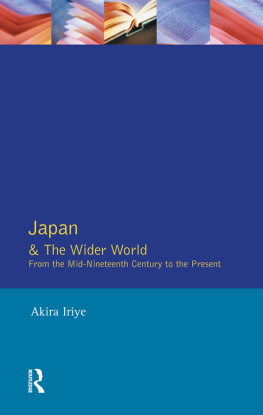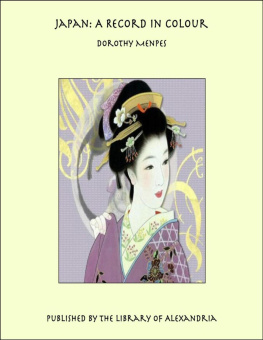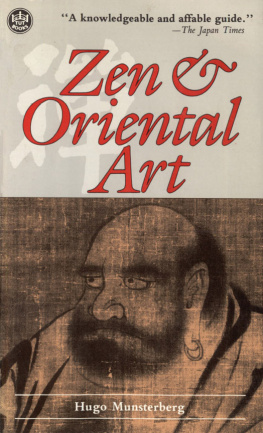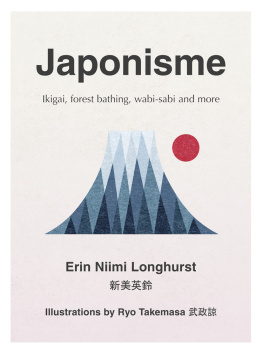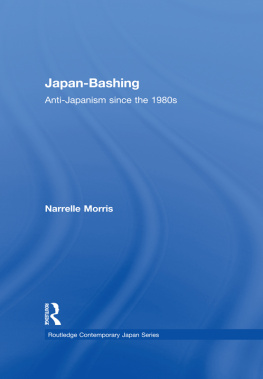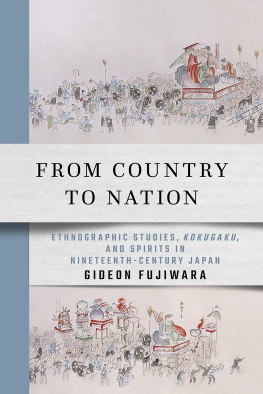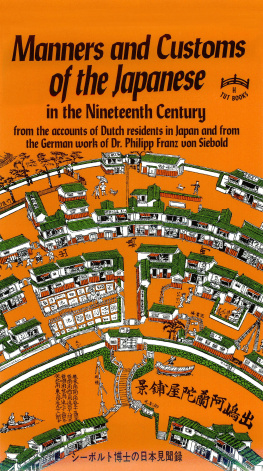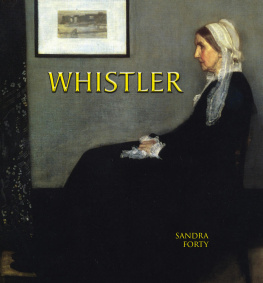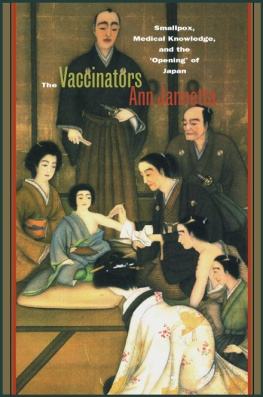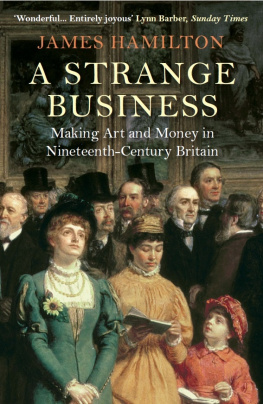JAPONISME IN BRITAIN
Japan held a profound fascination for western artists in the latter half of the nineteenth century and the influence of Japonisme on western art was pervasive. Paradoxically, just as western artists were beginning to find inspiration in Japan and Japanese art, Japan was opening to the western world and beginning a process of thorough modernisation some have said westernisation. The mastery of western art was included in the programme.
This book examines the nineteenth-century art world against this background and explores Japanese influences on four artists working in Britain in particular: the American James McNeill Whistler, the Australian Mortimer Menpes and the Glasgow Boys George Henry and Edward Atkinson Hornel. Richly illustrated throughout.
Ayako Ono gained her Doctorate from Glasgow University and is currently teaching in Japan.
First published 2003
by RoutledgeCurzon
2 Park Square, Milton Park, Abingdon, Oxon, OX14 4RN
Simultaneously published in the USA and Canada
by RoutledgeCurzon
270 Madison Ave, New York NY 10016
RoutledgeCurzon is an imprint of the Taylor & Francis Group
Transferred to Digital Printing 2006
2003 Ayako Ono
Typeset in Times Ten by Wearset Ltd, Boldon, Tyne and Wear
All rights reserved. No part of this book may be reprinted or reproduced or utilised in any form or by any electronic, mechanical, or other means, now known or hereafter invented, including photocopying and recording, or in any information storage or retrieval system, without permission in writing from the publishers.
British Library Cataloguing in Publication Data
A catalogue record for this book is available from the British Library
Library of Congress Cataloging in Publication Data
Ono, Ayako, 1970
Japonisme in Britain : Whistler, Menpes, Henry, Hornel, and 19th century Japan / Ayako Ono.
p. cm.
Includes bibliographical references and index.
1. ArtGreat Britain19th century. 2. Art, ModernJapanese influences. I. Title.
N6767 .O66 2003
760'.0941'09034dc21
2002031753
ISBN10: 0-415-29686-2 (hbk)
ISBN10: 0-415-40584-X (pbk)
ISBN13: 978-0-415-29686-1 (hbk)
ISBN13: 978-0-415-40584-3 (pbk)
eISBN: 978-1-13662-510-7
Printed and bound by CPI Antony Rowe, Eastbourne
It is an honour to write a foreword to this delightful and fascinating book, as it has been a pleasure to meet and work with Ayako Ono.
Her work on this subject started, of course, in Japan, and continued in the wonderful collections of the Hunterian Art Gallery and in the archives of the University of Glasgow which houses the Centre for Whistler Studies within the Institute for Art History. One of the documents that we studied there together is an account of a very exciting moment in the history of East-West relations: an account, written from a Japanese viewpoint, of the arrival in Japan of an American ship under Commodore Perry in 1853.
The story that Ayako Ono unravels starts with this crucial event, which initiated important economic and cultural contacts between Japan and the western world. Almost immediately artists in Paris, such as the etcher Bracquemond and the master printmaker Auguste Deletre, acquired prints and books of prints that changed their own art and perceptions of art.
During the 1860s, trade and international exhibitions in London and Paris showed goods from Japan, while books and articles described the visits of diplomats and travellers to the Far East. Japanese art and culture spread into the furthest reaches of Europe in a movement that soon became known as Japonisme. The definition of the word and description of important aspects of this movement form the vital starting point for this book.
Soon shops in Paris and Amsterdam, Rotterdam and London, were supplying costumes and porcelain, fans and lacquerware, paintings and wall hangings, stools and screens, to satisfy the growing demand for Japanese goods. The influence of Japan was enormous and complex, and no one book or exhibition could possibly discuss all the issues involved. Ayako Ono focuses therefore on the influence of Japan on the work of four artists working in Britain, whose lives and work were connected, whose work showed the influence of one on another, and who were each in turn profoundly affected by the art and culture of Japan.
James McNeill Whistler was the first of these, since he was among the earliest in the west to react to the art of Japan. By 1863, the American-born artist, then resident in London, was collecting oriental art in France and Holland. He included it in a series of paintings, the first, Purple and Rose: The Lange Leizen of the Six Marks being under way by December 1863. It included both Chinese and Japanese objects from his collection. The next, La Princesse du pays de la porcelaine, was specifically Japanese in subject, dress and accessories. There were critics who recognised that Whistlers models were western, and that his appropriation of eastern themes, costumes and accessories made no attempt to give an authentic view of contemporary Japan. Indeed he never went to Japan and knew it only through the works of art collected by himself and fellow enthusiasts like the leading Pre-Raphaelite painter, Dante Gabriel Rossetti, or by connoisseur dealers and writers such as Marcus B. Huish. However, Whistlers oriental paintings were among his most popular works and established him as a painter of note in the London art world, and the influence of Japanese art on his later work was deep and abiding.
It was also an influence that was felt by his pupils, and notably by the Australian-born artist Mortimer Menpes. Menpes did go to Japan, and his drawings, paintings and etchings, and a book written by him on his return, reflected an immediate and first-hand impression of Japanese life and culture. The book and exhibitions of his work were popular, reflecting the current interest in Japan and spreading knowledge of Japan throughout popular culture. Whether the influence of Whistler or of Japanese art was stronger in his work is a subject that Ayako Ono will be discussing further, as well as the exact nature of that influence and of his contacts with Japanese art and artists. Certainly Japan inspired some of his most interesting work, and its impact was felt in the creation of every aspect of his home, his studio and his work.
Like Whistler and Menpes, two Scottish artists, George Henry and E.A. Hornel, responded to Japanese art and depicted incidents from Japanese life. They visited Japan, and the work that arose during their travels and as a direct result of their tour was influential in its turn on the art of the Glasgow Boys and other avant-garde artists of the turn of the century. Their collection and use of photographs of Japan is a particularly interesting and important part of this study by Ayako Ono.
It is ironical that just as Whistler only knew Japan through the works of art collected by him and his fellow enthusiasts, so only the few Japanese artists or art dealers who had been to Europe knew his work directly. Otherwise knowledge of Whistlers work was dependent on articles written about him, at first or second hand. It is only comparatively recently that exhibitions of his work have been seen in Japan and collections of his superb etchings are being formed.


